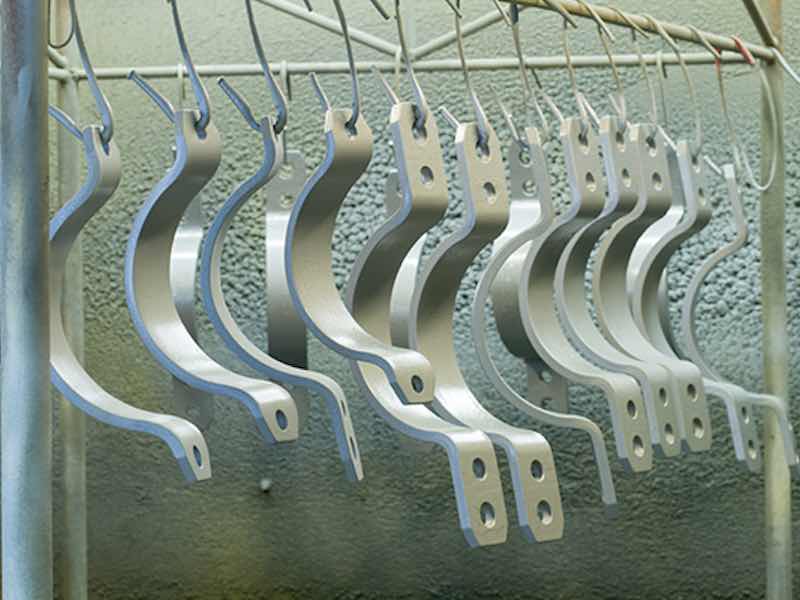The metal finishing industry continually diversifies, changes and introduces new processes. It also improves standard methods while streamlining others.
 Stephen F. Rudy CEFDriving forces for change include meeting environmental and safety regulations, the ability to process new finishes, changes in specifications and sustaining corrosion protection requirements, to name a few. Since the mid-1980s, there has been a steady progression to apply organic coatings, especially in place of some electroplated finishes. Replacements in this regard have surged upwards of 30 to 50% in some applications.
Stephen F. Rudy CEFDriving forces for change include meeting environmental and safety regulations, the ability to process new finishes, changes in specifications and sustaining corrosion protection requirements, to name a few. Since the mid-1980s, there has been a steady progression to apply organic coatings, especially in place of some electroplated finishes. Replacements in this regard have surged upwards of 30 to 50% in some applications.
Two well-known finishes are shopping carts and automotive wheels. As with any process, rejects do occur. Racks, fixtures and baskets require stripping regardless of the process success. The finisher has two distinct choices: scrap or strip and refinish. Economics and actual need typically dominate decision making. If strip and refinish is the route of choice, common methods used are to burn off the coating or chemically remove it. Let us review these alternative processes.
Cold Stripping
This type has been a workhorse for many years. The chemical profile of the bath consists of specialty solvents, organic additives and stabilizers. Cold stripping baths are non-aqueous (water-free). Cold strippers can be fast in action or slow and steady. Many of the organic coatings (such as powder, e-coat, paints, lacquers, etc.) are readily removed in these solutions. In fact some of the most aggressive organic multi-layer European wheel coatings are stripped in the cold strip baths. As the name suggests, these are non-heated solutions. Sensitive metals such as aluminum, brass, copper alloys and zinc, are not attacked by these solutions. Normally, the organic components in the stripper attack the organic coating (usually the polymer cross linkages), either lifting the coating by wrinkling or by dissolving it. A thin surface layer on the bath, consisting of either water or wax (less dense), minimizes evaporation loss of the stripper solution. Maintenance additions of the stripper concentrate are made to replenish drag-out losses and any specific product consumption during stripping. Filtration is helpful in removing accumulating stripped materials. Collection baskets placed in the bottom of the bath are also helpful.
This type of stripping solution has become more targeted for replacement, where suitable alternative solutions can be identified. The problem with the cold strippers revolves around their formulation. These solutions normally contain methylene chloride, formic acid, n-Propyl Bromide, cyclohexanone, phenols and other related compounds. Chlorinated solvents are a major global issue, as identified by atmospheric ozone depletion, leading to the Montreal Protocol and related regulatory restrictions, which are getting significantly tighter. Although these solutions are still in industrial use, strict emission controls, higher excise taxes, environmental regulations and proper disposal costs increase the related costs of their continued use. This status would also include any post-rinsing waters, which also must be properly disposed of. A typical compliant disposal for the stripper concentrates is by controlled, compliant high temperature incineration.
For the majority of stripping cycles, alternatives to the traditional cold organic solvent types are available and effective. There are differences in operating parameters, control procedures and types of solutions, and expected times to achieve equivalent stripping effectiveness.
Hot, Aqueous Systems
This system comprises the most commonly used for suitably replacing the cold solvents. As the name implies, these are heated solutions. They can be used as the 100% concentrate, or diluted with water. Most of these solutions do not contain chlorinated solvents, agents listed in cold strippers and phenolic compounds. Some of the additives and solvents in these hot strippers are Sara Title III exempt. One type is acidic, specially formulated to remove the organic coatings from alkaline sensitive metals, such as aluminum and zinc. Another formulation class is highly alkaline, containing sodium or potassium hydroxide, especially suited to strip coatings off steel, stainless steel and copper. Still another group of solutions is moderately alkaline for applications on brass, aluminum, zinc, along with ferrous metals.
Heating the solution at 150°F to 200°F (66°C to 93°C) along with the chemical profile of the stripper is essential to effectively strip a variety of organic coatings. The three operating parameters concentration, time and temperature are more important to establish and control. This is typically determined by prescreening and testing on sample parts and coated coupons. There seem to be more instances of organic coatings dissolving in the hot strippers by action of heat and the solvency. This is more prevalent in concentrate strippers mainly based on substituted high temperature stable glycols. These baths may operate in the range of 245°F to 350°F (118°C to 177°C). Wrinkling and lifting of targeted coatings do, however, also occur. Bath analysis is usually by neutralization titration, with suitable additions of concentrate used to restore proper stripper concentration. Water is added back to diluted solutions for volume adjustment. Some effective hot strippers operate most efficiently at 100% concentrate maintenance, without the addition of water. To aggressively attack difficult to remove organic coatings, the procedure of surface cross hatching (thin razor cut into the surface) undercuts the material thereby expediting the chemical attack of the stripping solution. There are also stripping applications where the consumption of specific solvent components may be greater than that of other constituents. This challenge is met by the addition of separate additives to balance the strip bath chemistry to maintain optimum performance. Filtration and collection baskets remove accumulating particles and sludges. Spent solution may be concentrated by extended heating, or neutralized. Compliant disposal is based on the assay of the solution.
Hot, Powder-Based Aqueous Systems
There are differences in this class and the previous one. For one, this type is a powder concentrate. Secondly, some of the chemical constituents differ because of formulation integrity and use in some different applications. The powder blends are exclusively alkaline, consisting of highly alkaline caustics, accelerators and inhibitors. The concentrates are diluted with water, providing working solutions of 1 to 3 lb/gal (120 to 360 g/L), operating at 150°F to 200°F (66°C to 93°C). The application is to strip organic coatings from steel. It is a good fit for galvanizing operations. Analysis is by neutralization titration. Additions may consist of the powder concentrate, or based on application, separate additives to adjust for proper stripper alkalinity additive concentrations. Filtration and collection baskets remove accumulating particles and sludges. Compliant disposal is based on the assay of the solution.
Stephen F. Rudy, CEF, is president of Chem Analytic and has written extensively about the finishing industry. Visit www.chemanalytic.com or call him at 917-604-5001.



































